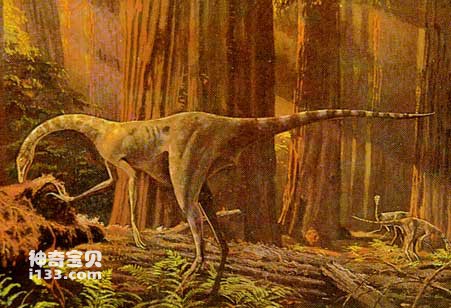About 208 million years ago, a global catastrophe wiped out many species of animals. This marks the end of the Triassic Period and the beginning of the Jurassic Period.
What caused this catastrophe? Scientists have proposed several explanations. Maybe, because a huge asteroid hit the earth; maybe, because changes in the earth's interior caused a series of volcanic eruptions. These events will cause drastic changes in the Earth's climate. There is also a possibility that the Pangea that merged into one during the Triassic period slowly decomposed into some smaller landmasses, which caused changes in the local environment.

Lugoulosaurus
Regardless, while many large reptiles became extinct at this time, small dinosaurs, small terrestrial crocodiles, and mammal-like reptiles survived the environmental changes. Among them, dinosaurs are the most important group because they became the masters of the earth in the following 140 million years. At the same time, the face of vegetation on Earth also changed, with evergreen shrubs and trees with dense foliage beginning to become the most common type.
The Lucouosaurus discovered in Yunnan Province, my country, is one of the earliest carnivorous dinosaurs that appeared in the early Jurassic.
Lugosaurus is a theropod dinosaur with a small body, flexible movement, and walking on two hind legs. The small knife-like teeth in their mouths indicate that they were a group of ferocious carnivores. And because their limb bones are hollow, scientists call them coelurosaurs. In fact, the Coelophysis that lived in North America during the Late Triassic was a coelurosaur.
As early as 1938, this early Jurassic coelurosaurus was discovered in Lufeng, Yunnan, my country. Because it was the time when the Chinese people were arduously fighting the Anti-Japanese War, researcher Professor Yang Zhongjian named it Lugoulosaurus.
Lugoulosaurus was about the same size as an ostrich and could reach 1.5 meters tall when standing. The head of Lucouosaurus was small and pointed, and the higher eye sockets on both sides of the skull indicated that it had a pair of large, round eyes and good eyesight. Lugoulosaurus has a long neck, which allows it to hold its head high when wandering in the jungle, and can bend its neck to extend in all directions, which is very helpful for it to search for prey and escape enemies. The pointed mouth of Lugosaurus was filled with sharp, awl-like teeth, indicating that it was a meat-eating dinosaur. Lugoulosaurus walked on two long and powerful hind legs, while its forelimbs were shorter and could be used like "hands" to capture other small vertebrates and insects. When encountering an enemy, Lugoulosaurus will quickly escape through the jungle, raising its tail high to maintain its balance when running.
animal tags:
We created this article in conjunction with AI technology, then made sure it was fact-checked and edited by a Animals Top editor.